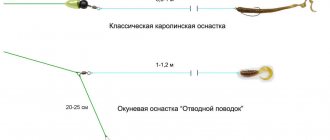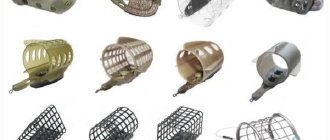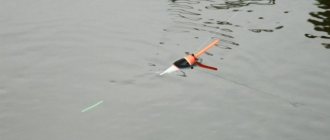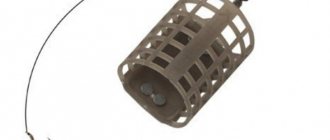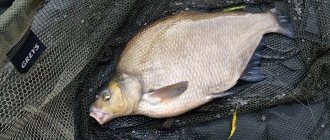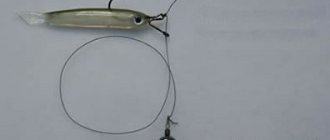In this article we want to talk about the best aspects of a slug-like bait, its scope of application, methods of attachment, wiring options, animation and other important fishing points in the equipment, so that fishing with a slug brings a lot of pleasure and a good catch.
Silicone slug tips - general characteristics
Slug (slug) , translated from English sounds like “slug”. Externally, it is a living creature in body shape.
Artificial slug baits belong to the class of passive silicone baits, since they do not have such a nimble tail as, for example, twisters or vibrating tails, which is the main tool for displaying the game activity of the bait.
The slug fishing bait has an elongated body shape, which tapers at the tail. Unlike other silicone baits, the slug does not have independent play. To provoke it, the spinning angler needs to twitch the tip of the tackle or perform one of the many jigs. However, the manufacturers compensated for the lack of their own game with especially soft rubber and attractive smells.
About choosing fishing tactics
I didn’t come to fishing with slugs and sticks right away; about four years ago I still looked askance at these baits. It was confusing that slugs do not have an active tail part - like, for example, twisters or vibrating tails. And then I believed that the live “play” of this particular component was the key to success in fishing. I would have thought so until an interesting incident happened. One day my friend and I went fishing on Koryazhny. My arsenal was dominated by twisters and vibrotails, and Sashka, my friend, grabbed a pack of Bubbring Shaker . All our bites happened then on a small dump about ten meters from the shore.
As usual, I started with a small twister, and Sashka placed a slug. I lead the bait with a classic “step”, and my friend methodically throws the slug with the tip of a spinning rod, letting the bait lie for a while after falling.
As a result, out of ten wires I get only three bites, and he gets about five, and this is against the backdrop of a bad bite! At first I thought it was an accident, but the same thing happened at another point. Then my nerves could no longer stand it, I asked to give me exactly the same bait and performed the same wiring as my friend: toss - pause - toss. And on the second cast I caught a perch, the picture was repeated on the third and fourth cast. And then, as they say, it dawned on me.
Passive perch reacts poorly to active bait, hence the logical lack of bites. Now on every spring fishing trip I fish exclusively with slugs. And I don’t even think about installing twisters and vibrating tails - because in conditions of poor bite they are less effective.

I don’t see any point in fishing with some expensive models on Koryazhny with its harsh bottom, because... In one fishing trip you can pick up a lot of such baits. To me it's the same as shooting silver bullets at empty bottles. Based on this, I take with me only those baits, the loss of which does not hurt my wallet too much; fortunately, there is currently a lot to choose from on the fishing market, and the concept of “cheap bait” does not mean that it is bad. A striking example of excellent quality rubber for reasonable money is the LureMax .
There are plenty of decent bass lures out there, but the ones I've caught the most for stripers are Minori , Riota and Stitch Stick . The first two models belong to the category of slugs, and the last one is a stick. Most often I choose calm and natural colors of baits. Black works well, but on low-light days white shines.
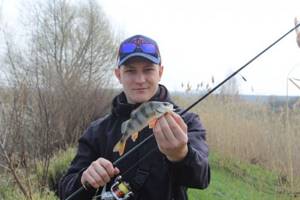
I have repeatedly noticed that perch does not particularly favor particularly bright colors, so I never take “acid” with me. Having a good supply of each of the listed baits in my arsenal, I feel comfortable, and most importantly, I don’t worry about the fact that I can leave a tidy sum in the snags.
Advantages of silicone bait
What are the advantages of this silicone bait?
- the ability to set the desired game to the silicone bait, if the bait begins to play in the hands of the spinning rod, then this is a special game, different from other types of silicone;
- the ability to perform various types of wiring;
- good range;
- sinks well, which allows the spinner to catch a fishing spot faster, compared to other silicone baits, and also cope with strong currents, since the slug’s sinking speed will not have time to come under its influence;
- the bait is effective in warm water;
- performs well when fishing in snags and thickets, since due to its streamlined design it easily slips through such water obstacles;
- You can easily make a slug from any vibrotail and twister if the tails of these baits were bitten off when biting.
In overgrown areas of the reservoir, the slug imitates a fish well. It is known that fish move in water thanks to their pectoral fins, and the tail remains motionless. The fish begins to move its tail part only when escaping from a predator. The lack of a tail and behavior of the slug allows the fish to judge it as careless and careless prey, which is an excellent reason for swallowing the bait.
The lifestyle of marine fish of the Mediterranean Sea, their character, method of feeding, types of gear and bait suitable for catching wayward inhabitants, interesting videos and amazing facts, you will learn from this section
In this video, see how a slug behaves in water
Read about the lifestyle of freshwater inhabitants of Israeli reservoirs and revealing the secrets of catching them here
What is the most important thing about fishing with a silicone slug?
Important points when using a slug:
- The spinner needs to understand why he needs to use this attachment at the moment.
- Assess the degree of activity of the fish, since slugs only work for this category of prey.
- Determine the water temperature of the reservoir.
- Know the fishing conditions.
- Use the “correct” tackle.
- Based on this information, select the bait of the desired size and shape.
- Make sure to install the tires correctly.
- Give the slug the right pace and game.
Gear requirements
In order for slug fishing to be more effective, you need to choose the right spinning rod. It is clear that a slug is only good if it is played correctly, which is determined by the spinner and his tackle.
What are the requirements for the rod:
- When performing jerky maneuvers, the spinning rod should not fail, but clearly give orders to the silicone bait, so in this case it is recommended to use a spinning rod or casting with a fast action.
- Since the actions of retrieving and animating the slug are quite active, the fishing tackle should be comfortable to use, fit well in the hand, and strong, since the size of the caught prey can be very different and not heavy.
Attaching a silicone slug bait
Basic methods of installing a slug:
- drop shot;
- Carolina rig;
- diverter leash;
- jig head;
- hinged installation with a collapsible Cheburashka load;
- installation of veki.
Find out how to perform perfect and reliable installation of other silicone baits - here
Basic rules for attaching a slug:
- The silicone bait is attached in the area of the front part of the body, so that the tail element is in a free position;
- If the slug is attached to the offset fish hook, then the offset tip must be hidden in its body.
- To mount the slug, large fishing hooks are used, since its body is larger in size than an ordinary worm and for high-quality hooking it must be one third larger than the width of the body of the bait.
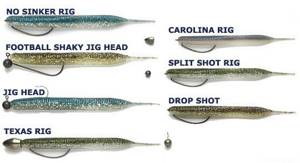
To learn how to choose the right hook, what characteristics of a hook you should pay attention to first, and how to choose a hook for specific fishing conditions, read useful tips
Installation of "Veki"
Of all the above installations, the most popular is the installation of a slug on an offset hook, since in such baits there is a slot along the back to hide the tip of an offset hook. Moreover, this type of fastening does not require additional loading. Of course, it is possible to mount it on an offset machine in tandem with a bullet load or a Cheburashka load. For example, in order to increase the game of the bait, you can fasten the slug on a retractable leash, which is tied to the leash not with a knot, but with a loop, so that the eye of the fishing hook with the slug behaves freely on this type of fastening (for example, you can use a loop "Rapala")
Edible slugs
Date: July 12, 2014 | 137
Recently, in addition to classic twisters and vibrotails, various new forms of soft silicone baits are gaining more and more momentum. Slugs are one of these types of silicone baits. Let's talk about this class of baits in more detail. Let's look at what a slug can do, its advantages and disadvantages. Let's look at the intricacies of installation.
A slug is a passive bait. For example, a vibrating tail, a twister, and some other forms of silicone baits have an active element (tail) and their own game, vibration with simple uniform wiring. The slug, like many other types of edible silicone, does not have its own game - it is animated by the fisherman using a spinning rod and variations of wiring.
Externally, slugs have an elongated body, resembling a fish or a worm, a leech. In the tail, the slug tapers, there is a thin tail (or not very thin, but clearly defined). The absence of an active element is compensated by especially soft, lively playing silicone, as well as “edible” properties - an attractant.
Slugs are used in jig and microjig fishing, as well as in such rigs and fishing styles as drop-shot, retractable leash, Carolina rig, weckies, etc.
Place the slug behind the front half of the body so that the tail is free. It is advisable to hook no more than the front half or 1/3 of the bait, and let the rest play.
You can attach the slug to a regular jig head. You can use hinged mounting with a collapsible Cheburashka. They are mounted either classically or over the edge, giving the slug a more active game. You can also attach a slug to a jig head and a hinged hook, similar to an offset hook, hiding the sting in the back of the bait.
Installations with slugs on offset hooks are especially popular. Many slug models have a special slot along the back to hide the point of the hook. Slugs on offset hooks can be used independently, without any additional weight (for fishing among grass in shallows). A slug with an offset hook is also used in combination with a bullet sinker or simply with a Cheburashka, as well as on a separate leash in a retractable leash and Carolina rigs. When the bait is tied on a separate leash, in order to increase the mobility of the slug, it is not tied with a blind knot, but rather a loop is formed in which the eye of the hook with the bait moves freely. Such a loop can be realized using a Rapala or figure eight knot (maybe there are other options).
Well, and the weki style - when the bait is pierced across.
Retrieving slugs involves wave-like movements, frequent pauses, jerking movements, and dragging along the bottom. Such playing along with the tip of the rod allows you to turn a passive slug into a very mobile and attractive object of attack for fish. Often a slug is the best way to stir up a passive predator (in still cold water in the spring, in hot summer water, or simply in a lack of biting due to other reasons).
If we talk about popular models of slugs, then several models that immediately come to mind have already won considerable fame among domestic spinning players, such as Imakatsu Javastick, Keitech Sexy Impact and others. I will consider a number of popular and not so popular slugs.
Imakatsu Javastick . Perhaps the most famous slugs! Recognizable body with jumpers. Very active game, softest but very durable silicone, good smell. Javastick is effective in a wide variety of installations. They use Javastick of different sizes - small models for perch and peaceful fish, for microjig; large slugs are eaten well by pike and pike perch. There are many clones of this edible. This is the fate of all successful lures and models - to become a prototype for the creations of competitors.
Keitech Shad Impact . Slug is an imitation of fry. Silicone is very soft, richly impregnated with attractant - an excellent imitation. Shad Impact slugs have proven themselves very well when catching large perch, in particular with a retractable leash. But it can also be used with all other installations. There is a slot in the back for an offset hook.
Keitech Sexy Impact . Also a very famous slug with original geometry. The tail part is slightly flattened. The thin tail at the end of the slug is very mobile. The bait has an original feature. The lower part of the body is saturated with a special salt, which weighs down the slug and gives it stability in the correct position. This is important in installations without an eccentric load, for example, with an offset machine, without additional loading. There is a slot in the back for an offset hook. There are many copies of Sexy, for example, Kosadaka SOTA Worm and others. Of course, there is no longer a proprietary loading of salt on the lower part. But even without this trick, clones are successfully caught, and at the same time they cost 5-7 times less.
Keitech Live Impact . An interesting slug with a ribbed body, imitation of a worm or leech. Forked tail. Very flexible and soft silicone.
Reins Aji Ringer . Reins also has successful slugs. Aji Ringer has a ribbed body, like a worm, and a thin, movable tail. Models available in different sizes. The smallest ones are for microjig; larger ones are for jigs and spaced rigs.
Reins Aji Meat is a slug with a long ribbed tail. The tail is very mobile. When jumping along the bottom, on a microjigging rig, the results are very good.
Jackall iShad . A slug with a thick ribbed body and a movable thin tail.
Jackall Super Pin-Tail . Slug is an imitation of fry. Used in drop shots and other montages described above.
Jackall Clone Fry . Very realistic imitation of a fry. It is mainly used for fishing with an offset hook without additional weight, in the grass.
Jackall Super Cross Tail Shad . The bait is very interesting. In addition to a good imitation of a fry (color, shape), there is a hollow channel in the tail, which makes it buoyant. This property beautifully lifts the tail of the slug during pauses when fishing with a hinged mounting of a microjig. Also, this slug is used in a lead and drop shot.
Lucky John Troutino . A slug is an imitation of a tadpole.
OSP Mylar Minnow . Another slug is an imitation of whitebait.
Gary Yamamoto Yamaminnow and Gary Yamamoto Shad Shape Worm . Also two catchy slugs from Gary Yamamoto.
I am sure that after reading this, many will want to experiment with slugs if they were not previously familiar with this class of silicone baits.
Share with your friends:
Category: Tackle Equipment
Tags: Jig, Microjig, Lures, Slugs, Tackle, Edible
What types of leads are used when fishing with slugs?
Slugs love the following types of postings:
- wavy;
- jerk;
- aggressive;
- twitching.
There is no clear strategy and rules for performing wiring, be it classic or wavy. The main thing when choosing a method of playing a slug is to clearly understand that each model of such silicone bait responds to the movements performed by the spinning rod in its own way. So, it’s better to practice in advance and find out the features of the “dance” of each of your baits.
For example, long slugs show excellent play with small and frequent shaking of the tip of the spinning rod, and single (with pauses) jerks are suitable for slugs with a flattened body.
As for hooking, it should be instantaneous with any feeling of a bite due to the casting range of the bait and the lightning-fast dive of the slug, which can provoke an active predator to immediately eat the prey that comes into view.
Sticks: a feature of the bait
A fishing stick is an invention of Japanese fishermen. Not to be confused with the Stickbait wobbler. Initially, it was positioned as a universal bait for fishing pond trout. Translated from English into Russian, Stick means “stick”.
Indeed, such an artificial attachment looks like an ordinary, unremarkable stick. However, despite its rather modest, no-frills shape, the stick is excellent for catching not only trout, but also other fish.
Based on the material from which they are made, sticks are of two types:
- metal models - made of narrow straight plates of various lengths, painted in different colors;
- plastic sticks are plastic tubes with a metal rod inside. The emerging ends of the rod are bent, forming loops to which a hook is attached on one side and a leash on the other.
All sticks have different lengths and weights, which allows them to fish almost the entire depth horizon.

A characteristic feature of the stick that distinguishes it from other artificial baits is that it is equipped with a beardless hook. This decision is justified by the principles of humane treatment and greater productivity when catching schooling fish. During an active stroke, you can very quickly shake the fish off the hook without causing serious damage to it, and cast the tackle again.
The stick has an original, unique game. With a uniform, leisurely movement through open water, the stick sways on its sides, forming small-frequency vibrations. When fishing vertically from ice, the thrown bait floats, demonstrating a “crumbling” animation. Be it in summer or in winter, the fish notices such a game from a long distance and rushes towards it to attack.

